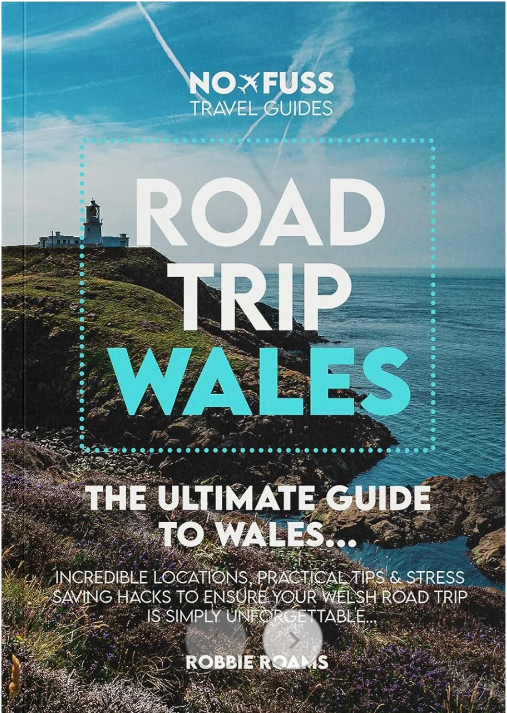The Wales Way
The North Wales Way.
Why Drive The North Wales Way?
The North Wales Way is a scenic route stretching from the market town of Mold to the coastal port town of Holyhead, covering approximately 74 miles. This journey takes you through the picturesque landscapes of Flint, Denbighshire, the natural wonders of Snowdonia National Park, the coastal beauty of Anglesey, and the charming towns and villages along the way. In this article, we will explore the highlights of The North Wales Way, immersing ourselves in the rich culture, history, and natural beauty that this route has to offer.

The North Wales Way: Part of the Wales Way Driving Route
Welcome to The North Wales Way, a remarkable journey that allows you to explore the captivating beauty of Wales. Starting on the border, the North Wales Way follows an old trading route of around 75 miles along the coast and on into Anglesey.
As part of The Wales Way tour, the North Wales Way takes you on an enchanting road trip along the North Wales coastline, Snowdonia, showcasing the best of Wales’ natural landscapes, charming towns, rich history, and outdoor activities.
With plenty of loops and diversions, it can take days to properly explore. What better way to get to know the Welsh coastline than by taking a road trip along The North Wales Way?
Driving The Wales Way – The North Wales Way
One epic journey, three distinct routes together.
Dubbed The NC500 For Wales and the Wales version of Route 66, the three routes of The Wales Way showcase 420 miles of Wales’ most exceptional scenery. The Wales Way consists of three distinct routes: The Coastal Way, the Cambrian Way, and the North Wales Way. Each route offers unique and diverse experiences, but in this article, we will focus on the North Wales Way.
This website is supported by our readers, so if you buy through links on this site we may earn a small commission at no extra cost to you.
The North Wales Way
Explaining the North Wales Way
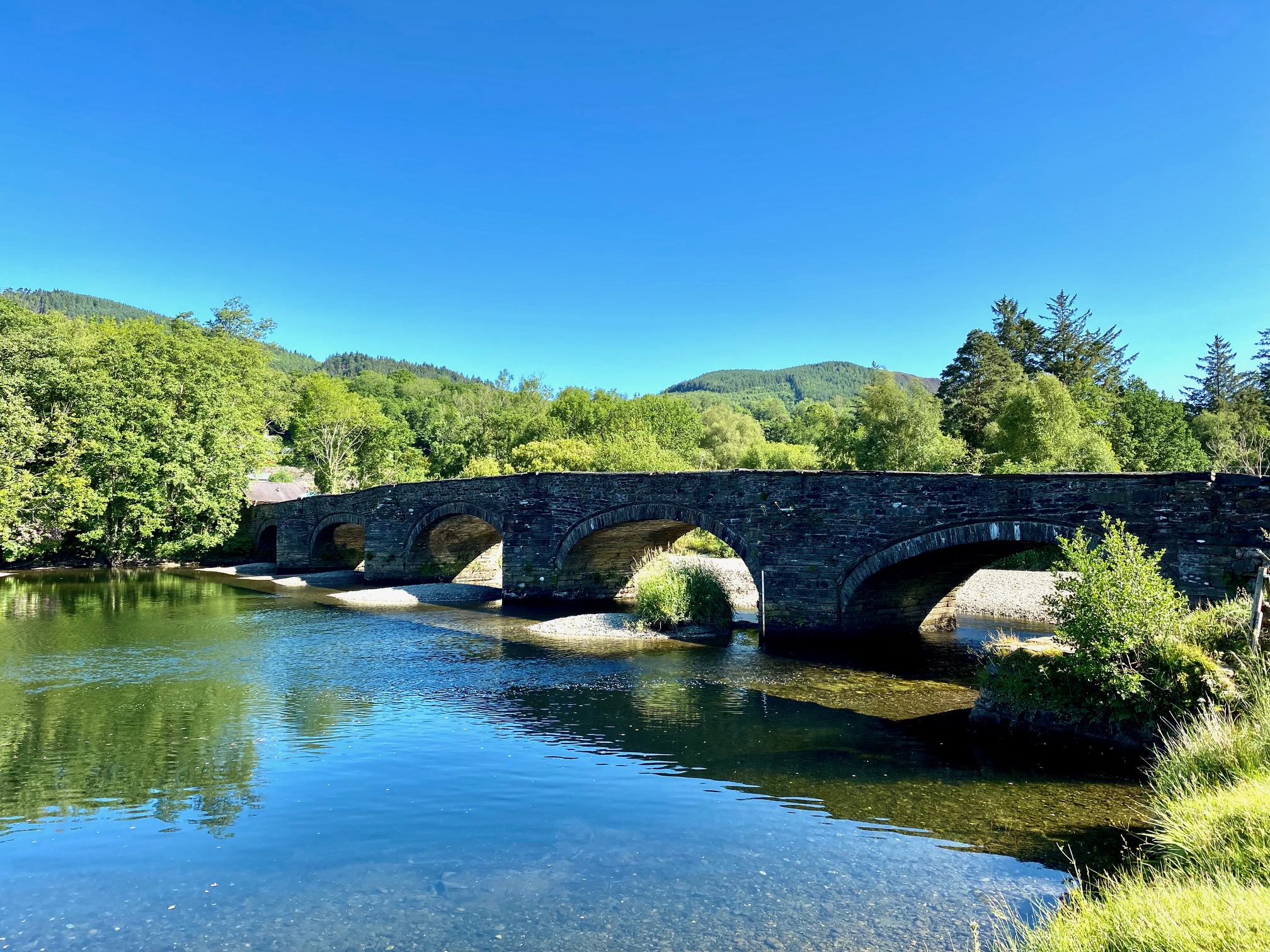
The North Wales Way traces an ancient trading route along the northern coast and onto Anglesey. Spanning just 75 miles (120 km) if it is your intention to just drive the route it will probably take less than a couple of hours. But, this trail not only takes in a host of resort towns and historical fortifications but also acts as a springboard to explore the wider northern region.
A salient feature of this route is the prevalence of imposing castles. Beaumaris Castle on Anglesey impresses with its meticulously planned concentric layout. Caernarfon Castle stands out with its unique polygonal towers, while Conwy Castle impresses with its massive structure and accompanying town walls. Along with Harlech Castle, these 13th-century architectural marvels constitute a recognised UNESCO World Heritage Site.
Beyond the historical allure, the route also encompasses several traditional resort towns scattered along the northern coast. The towering peaks of Eryri, also known as Snowdonia National Park (Eryri translates to ‘place of eagles’ in Welsh), present a commanding view on the southern horizon.
The North Wales Way also provides access to several additional attractions. It serves as a portal to the Vale of Clwyd, punctuated with charming market towns leading to Llangollen.
In essence, the North Wales Way offers a diverse experience, combining historical landmarks, natural beauty, and regional cuisine, presenting a unique perspective on this captivating part of Wales.
Mold, North Wales: A Blend of Market Town Charm and Historical Intrigue
Situated in Flintshire, North Wales, Mold is a thriving market town that masterfully combines the vibrancy of contemporary life with the resonance of its historical past. From bustling weekly markets to the Theatre Clwyd, one of Wales’ major drama-producing venues, Mold offers a range of experiences that cater to different interests.
For history enthusiasts, the town is rich in heritage. Bailey Hill, a Norman Motte-and-Bailey castle at the top of the High Street, is a testament to Mold’s historical origins. St Mary’s Church, an imposing structure that dominates the town’s skyline, houses an ancient ‘Celtic’ stone and other historical artefacts.
Mold Market
Central to Mold’s character is its vibrant market. There has been a street market in Mold since medieval times, it remains today but only on Wednesdays and Saturdays throughout the year, and it’s the heartbeat of the town. Spread from the High Street to Daniel Owen Square there’s a huge variety of produce from fresh fruit and vegetables, cheese, meat, and plants to handcrafted items. You will also be the recipient of lots of free advice. How to cook the meat, where in the garden to put that plant! If you don’t find yourself in town on the right day, rest assured you will also find a thriving indoor market open all week (Not Sundays) with a wide variety of stalls and an indoor barber’s shop.
Mold’s flourishing food scene is also celebrated annually during the Mold Food and Drink Festival, which attracts gourmands from all corners of the country.
A short distance from Mold, Loggerheads Country Park offers an escape into nature. Its riverside walks, woodland trails, and dramatic limestone valley form a serene backdrop for outdoor pursuits. Nearby, Moel Famau, the highest hill within the Clwydian Range, provides panoramic views of the surrounding landscapes.
Mold Castle: A Silent Testament to North Wales’ Past
Mold Castle Will be a disappointment if you are expecting a Cadw-type experience. Head for Bailey Hill which is opposite the Parish Church of St Mary’s. This is a great place to let your dog off for a run and within these grounds are the remains of the Norman Motte and Bailey castle.
Mold Castle, perched atop Bailey Hill in the heart of Mold, North Wales, is a historical site echoing with the voices of its Norman past. While only earthworks and a few pieces of stone remain today, the site’s historical significance is unquestionable.
Dating back to the 11th century, Mold Castle was initially a wooden structure built by the Normans during their conquest of Wales. Later transformed into a stone fortress, it bore witness to the tumultuous history of the region. The motte-and-bailey design, typical of Norman fortifications, is still discernible from the mound and surrounding ditches.
Today, visitors to Bailey Hill can experience the site through interpretive panels that depict the castle’s history and its role in the region’s past. The site also offers panoramic views of the town and surrounding landscapes, enhancing its appeal for history buffs and nature lovers alike.
Although the physical remnants of Mold Castle may be minimal, its historical resonance is powerful. This centuries-old site provides a tangible link to North Wales’ rich past, making it a significant stop on any historical journey through the region.
St Mary’s Church, Mold: A Beacon of History and Spirituality
St. Mary’s Church, with its impressive tower and intricate stained glass windows, is another must-see attraction. However its regularly locked, so to try and view it on a Sunday
St Mary’s Church in Mold, North Wales, is a noteworthy emblem of local history and religious heritage. Standing tall over the landscape, this Anglican church remains an integral part of the community, serving both as a place of worship and a testament to the town’s past.
Constructed in the 15th century, St Mary’s Church embodies the architectural elegance of the Perpendicular Gothic style. The building’s remarkable features include its ornate wooden ceiling, a relic from the medieval period, and a beautifully crafted intricate stained glass window.
Perhaps one of its most intriguing attributes is the presence of an ancient ‘Celtic’ stone housed within its walls. This artefact is thought to date back to the 9th century, adding another layer to the church’s historical narrative.
St Mary’s also boasts an active community life, hosting regular services, concerts, and community events, furthering its role as a spiritual and social hub in Mold.
Mold – Further Afield
The town also serves as an ideal base for exploring attractions in North Wales. A short drive away is the city of Chester, known for its extensive Roman walls and medieval half-timbered buildings. Also nearby is Wepre Park, a sprawling woodland area, home to Ewloe Castle, a native Welsh castle hidden amongst the trees.
Mold, with its market town charm and fascinating historical sites, coupled with its proximity to nature parks and major cities, offers a unique and varied visitor experience. Its blend of shopping, history, food, and the arts, against the backdrop of stunning Welsh landscapes, makes Mold a must-visit destination.
Flint, North Wales: A Mixture of History, Heritage, and Natural Beauty
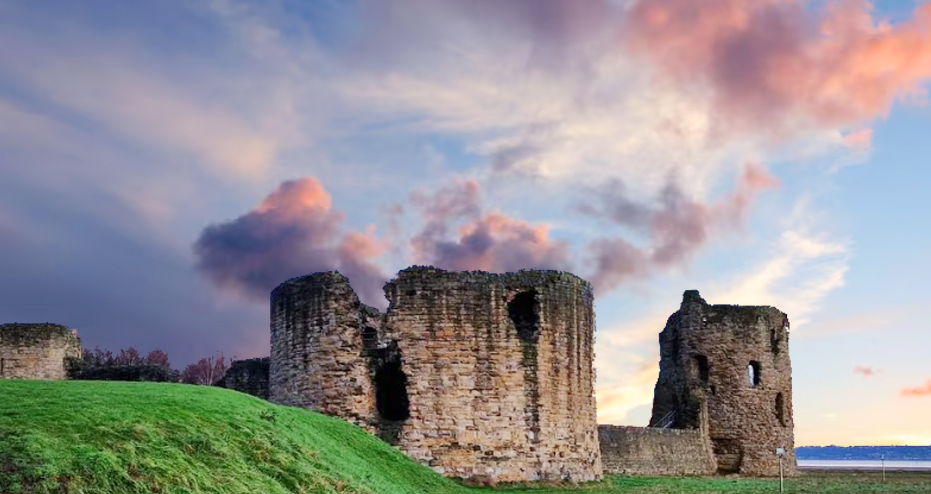
Next, dive into the enthralling history of North Wales. Flint is 20 minutes north, the location of the first of the mighty castles along this Way. Work began on Flint Castle in 1277, making it the first of Edward I’s strongholds in his quest to conquer Wales. Immortalised in Shakespeare’s Richard II, and having exceptionally thick walls, this is a Cadw-owned castle, but as ruins they are free to visit and the site benefits from a free car park, which is also handy if you want to take a wander into town
St Mary’s Parish Church, a Grade II listed building, stands as an impressive example of ecclesiastical architecture. The church is known for its oak screen and modern stained-glass windows, attracting history and architecture enthusiasts alike.
In terms of natural attractions, the Flint Foreshore provides a haven for wildlife enthusiasts. This local nature reserve boasts a variety of bird species, making it a popular spot for birdwatching.
Close to Flint, Greenfield Valley Heritage Park offers an engaging mix of natural and historical attractions. With its ancient woodland, reservoirs, and remnants of early industrial works, the park is an excellent spot for walking and exploring.
In addition, the Deeside Leisure Centre in Queensferry, with its ice rink, skate park, and other sports facilities, makes for a fun day out, especially for families on a wet afternoon!
Flint’s blend of historical landmarks, nature reserves, and close proximity to major attractions in North Wales makes it a compelling destination. The town’s rich history, coupled with opportunities for nature walks and birdwatching, creates a varied and fulfilling visitor experience. Whether it’s delving into the town’s past at Flint Castle or enjoying the wildlife at Flint Foreshore, visitors will find Flint offers a unique perspective on the diversity and beauty of North Wales.
Journey through Denbighshire: A Voyage of Heritage and Natural Wonders
Leaving Mold and Flint behind, we enter Denbighshire, a county known for its scenic beauty. The rolling hills and lush green valleys make it a paradise for nature lovers. Take a detour to Ruthin Castle, a medieval fortification transformed into a luxury hotel or Denbigh Castle, an imposing fortress built in the 13th century, is also worth a visit.
Spanning from the coastal plains to the peaks of the Clwydian Range, Denbighshire in North Wales offers a vibrant blend of history, culture, and captivating natural landscapes. A journey through this county reveals a rich tapestry of heritage sites, charming towns, and breathtaking outdoor spaces. The Route follow the A55 but there are many Loops and detours along the Way.
Starting with the historical town of Rhuddlan, visitors can explore the Rhuddlan Castle, an enduring symbol of King Edward I’s Welsh conquests in the 13th century. The formidable fortress with its diamond-shaped design provides a fascinating insight into the medieval period.
Continuing the journey, the town of Denbigh, renowned for its historical significance, beckons next. Here, the 13th-century Denbigh Castle, with its triple-towered gatehouse, dominates the skyline, while the town’s winding streets and old buildings reflect its historical charm.
St Asaph: Second smallest City in the UK
St Asaph is a city and community on the River Elwy in Denbighshire, Wales. With a population of 3,355, it is the second-smallest city in Britain in terms of population and urban area.
In the heart of Denbighshire, the city of St Asaph, though one of the smallest cities in the UK. Despite its small size, St Asaph packs a hefty cultural punch. With its historic landmarks and charming ambience, this city is a prime location for those seeking an intimate encounter with Welsh heritage.
Dominating the city’s cultural landscape is St Asaph Cathedral, the smallest ancient cathedral in Great Britain. Steeped in history dating back to the 13th century, it continues to serve as a spiritual hub for locals and visitors. The cathedral is also home to the William Morgan Bible, a significant piece in the preservation of the Welsh language.
The Clwydian Range and Dee Valley
For nature enthusiasts, Denbighshire does not disappoint. The Clwydian Range and Dee Valley, an Area of Outstanding Natural Beauty (AONB), offer a myriad of walking trails with stunning views. The highest point, Moel Famau, is a popular destination with its iconic Jubilee Tower.
The county also offers immersive experiences for wildlife lovers. The Llangollen Canal, a haven for local wildlife, and the Horseshoe Falls, a semi-circular weir, provide perfect settings for tranquil moments amidst nature.
Finally, the town of Llangollen, nestled within the Dee Valley, offers an array of attractions, including the Llangollen Railway, the last steam heritage railway of its kind in Wales, and the Plas Newydd, once home to the famous ‘Ladies of Llangollen.’
Denbighshire, with its historical gems, natural beauty, and vibrant culture, offers a diverse palette of experiences for its visitors. It stands as a testament to North Wales’ rich past and its enchanting natural landscapes, making a journey through this county a fulfilling voyage of discovery.
Llangollen and its Canal: A Harmony of History, Nature, and Culture
Nestled in the heart of the Dee Valley in North Wales, Llangollen serves as a hub of heritage, natural beauty, and cultural charm. The town, along with the Llangollen Canal, offers an array of attractions that promise a unique blend of experiences to visitors.
Among the town’s most significant historical landmarks is the Llangollen Bridge, an iconic 14th-century stone bridge crossing the River Dee. Nearby, Plas Newydd, once home to the ‘Ladies of Llangollen,’ showcases an impressive display of Gothic-style architecture and offers panoramic views of the town and its surroundings.
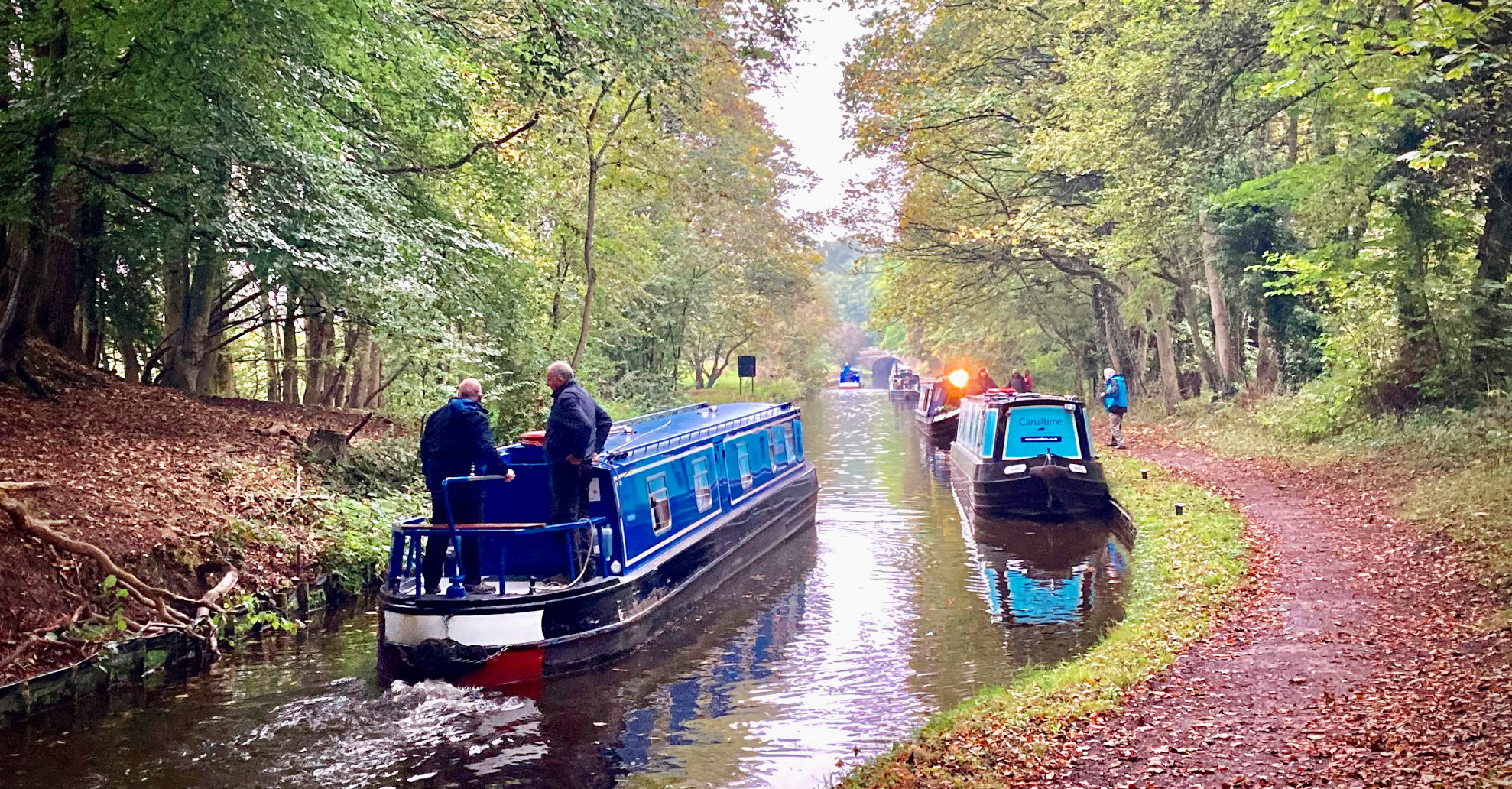
Llangollen Canal
The Llangollen Canal is another focal point for visitors. It’s home to the Pontcysyllte Aqueduct, a UNESCO World Heritage Site. Built in the 19th century by renowned engineers Thomas Telford and William Jessop, this navigable aqueduct stands as a marvel of industrial heritage. Visitors can choose to walk across the aqueduct or enjoy a more leisurely experience aboard one of the many canal boats that operate on this scenic waterway.
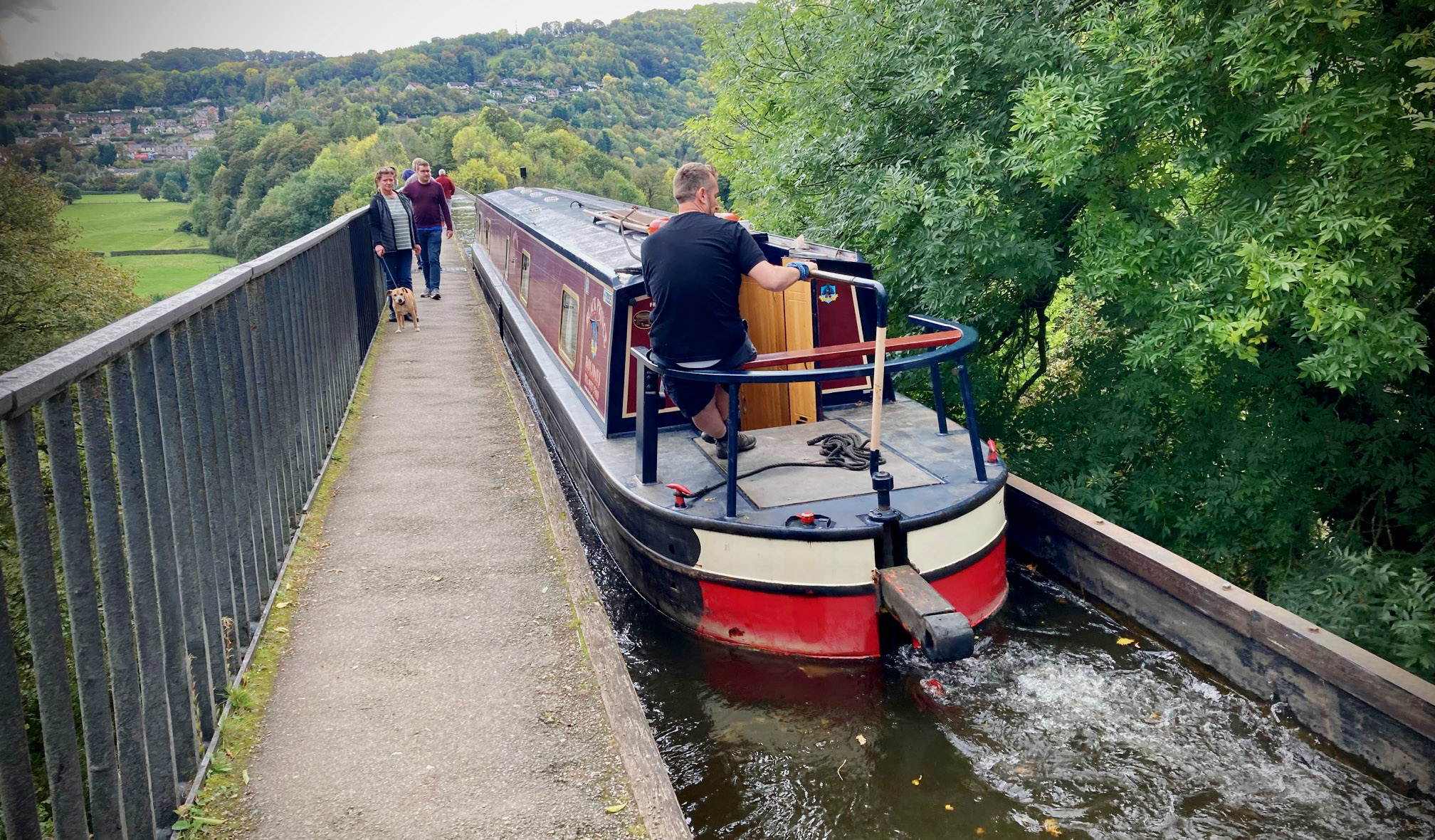
Llangollen also serves as the terminus for the Llangollen Railway, the last steam heritage railway of its kind in Wales. This railway provides an opportunity to journey through the stunning Dee Valley in vintage style.
The town is also renowned for its vibrant cultural scene. The Llangollen International Musical Eisteddfod is a key highlight, attracting performers from around the world and celebrating the universal language of music.
For nature enthusiasts, Llangollen offers easy access to a network of walking routes, including the Offa’s Dyke Path. The town is also a gateway to the Clwydian Range, an Area of Outstanding Natural Beauty.
Near Llangollen, the ruins of the medieval Castell Dinas Brân overlook the town from a nearby hilltop. A hike to this historic site rewards visitors with sweeping views of the valley.
In essence, Llangollen and its canal present a diverse tapestry of attractions, from historical landmarks and cultural events to natural beauty spots. Whether you’re a history buff, a nature lover, or a cultural enthusiast, Llangollen has something to offer every visitor.
Discovering Snowdonia National Park
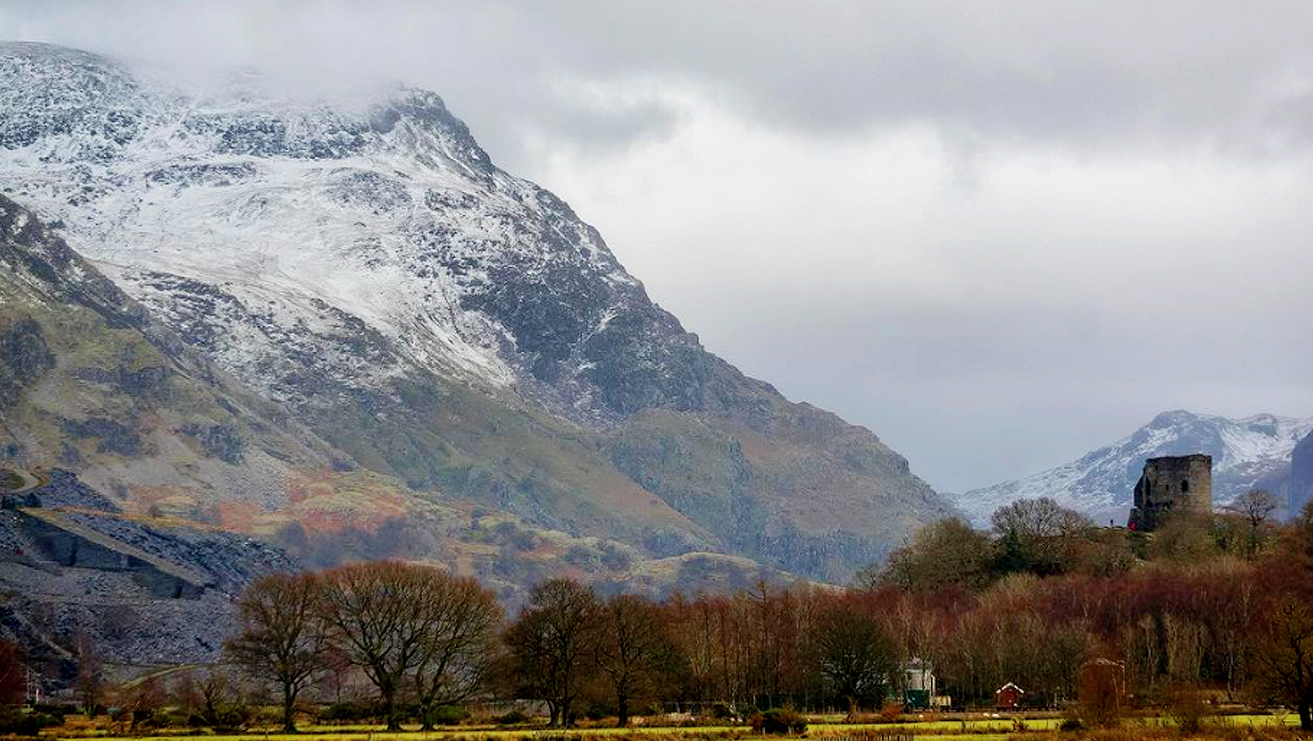
Nestled in the heart of Wales, Snowdonia National Park stands as a testament to the awe-inspiring beauty of nature. Covering an expansive area of 823 square miles, this breathtaking destination offers visitors an array of activities and sights that cater to all interests.
At the heart of Snowdonia lies Mount Snowdon, the highest peak in Wales and England, attracting hikers and adventure seekers from around the world. Scaling its majestic slopes provides an exhilarating experience and rewards climbers with panoramic vistas that stretch as far as the eye can see. For those who prefer a more relaxed approach, the Snowdon Mountain Railway offers a picturesque journey to the summit, affording passengers stunning views along the way.
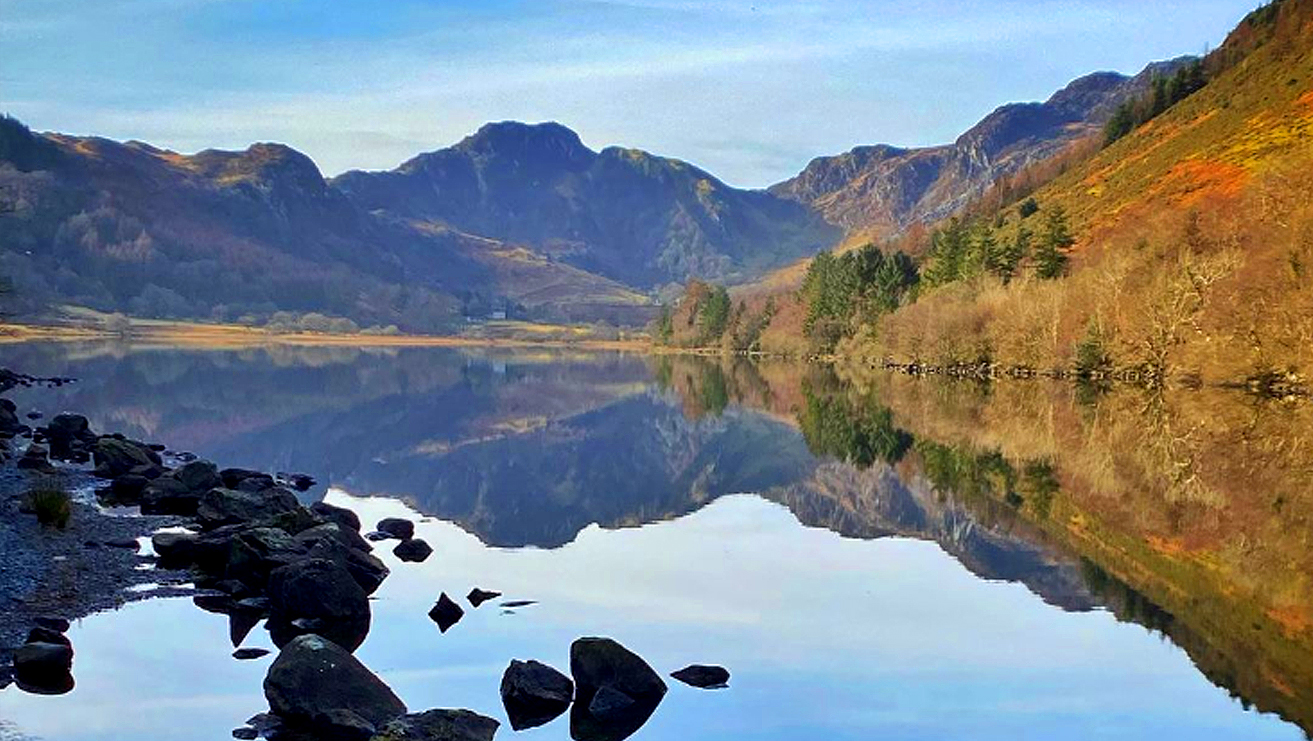
Beyond the towering mountains, Snowdonia boasts a network of hiking trails that wind through lush valleys, sparkling lakes, and cascading waterfalls. Whether you’re a seasoned trekker or a casual walker, there are routes to suit every ability level. The enchanting landscapes provide the perfect backdrop for outdoor activities such as mountain biking, rock climbing, and kayaking, allowing visitors to immerse themselves in the untamed beauty of the region.
For history enthusiasts, Snowdonia National Park offers a glimpse into Wales’ rich cultural heritage. Ancient castles dot the landscape, each with its own captivating story to tell. Harlech Castle, a UNESCO World Heritage Site, stands as a testament to medieval fortification, while Conwy Castle showcases impressive architectural prowess. Exploring these ancient ruins transports visitors back in time, evoking a sense of wonder and curiosity.
Around Snowdonia
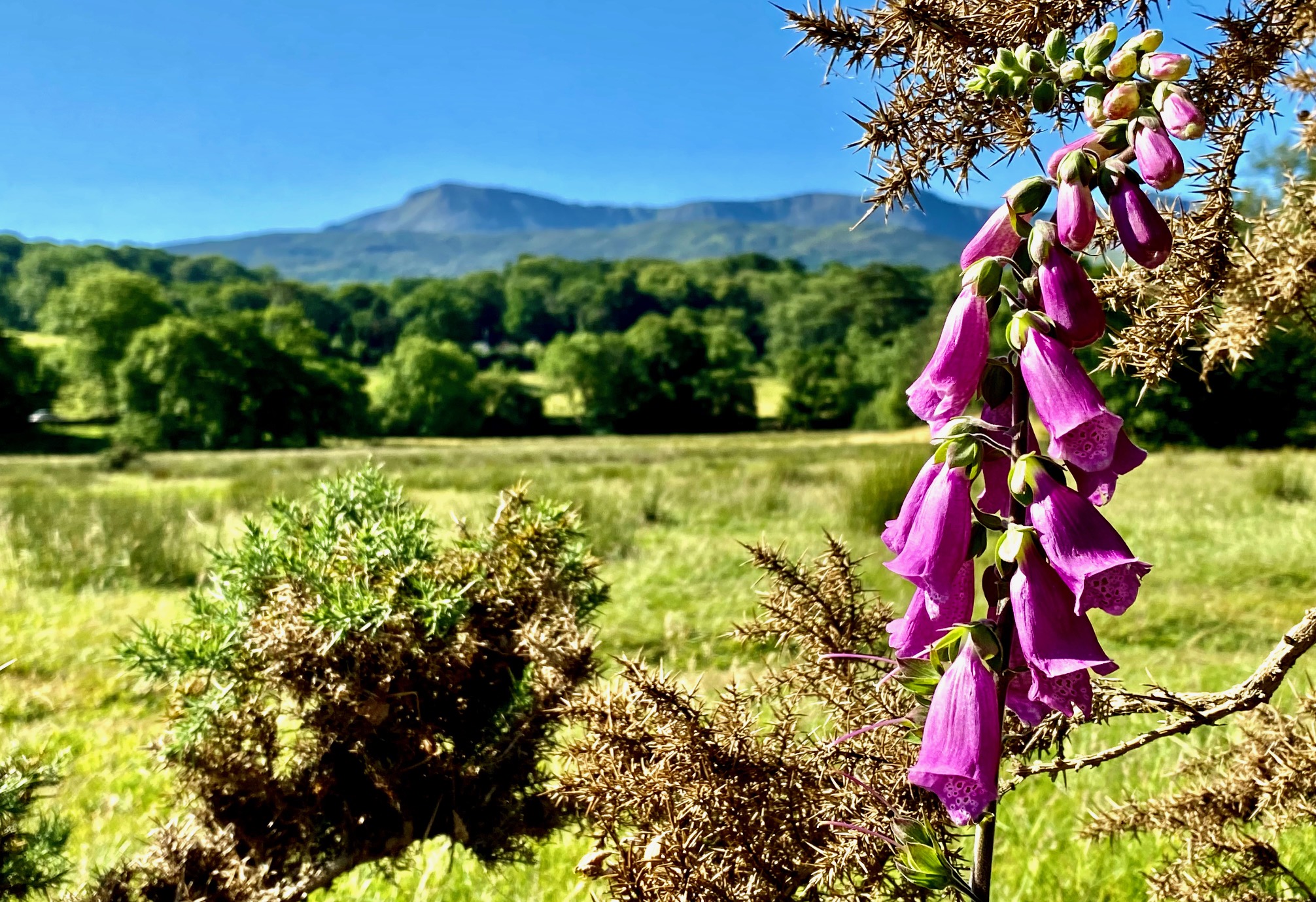
Nature enthusiasts will find solace in the diverse ecosystems found within Snowdonia National Park. The park is home to rare flora and fauna, including the majestic red kite and the elusive peregrine falcon. Nature reserves such as Coed y Brenin Forest Park and Aberduna National Nature Reserve offer tranquil settings for birdwatching and wildlife spotting. These preserved habitats allow visitors to connect with the natural world and appreciate the delicate balance of life.
Just beyond the park’s borders lie charming villages and towns that are well worth a visit. Betws-y-Coed, known as the “Gateway to Snowdonia,” offers a quaint atmosphere with its picturesque bridges and charming shops. The village serves as a hub for outdoor enthusiasts and provides easy access to nearby attractions, such as Swallow Falls and the Fairy Glen.
In conclusion, Snowdonia National Park beckons adventurers, nature lovers, and history enthusiasts alike. With its towering peaks, captivating landscapes, and cultural treasures, this remarkable destination promises an unforgettable experience. From scaling Mount Snowdon to exploring ancient castles, the wonders of Snowdonia are waiting to be discovered. So, pack your hiking boots, embrace the spirit of exploration, and embark on a journey that will leave you in awe of the natural world.
Experiencing Llandudno
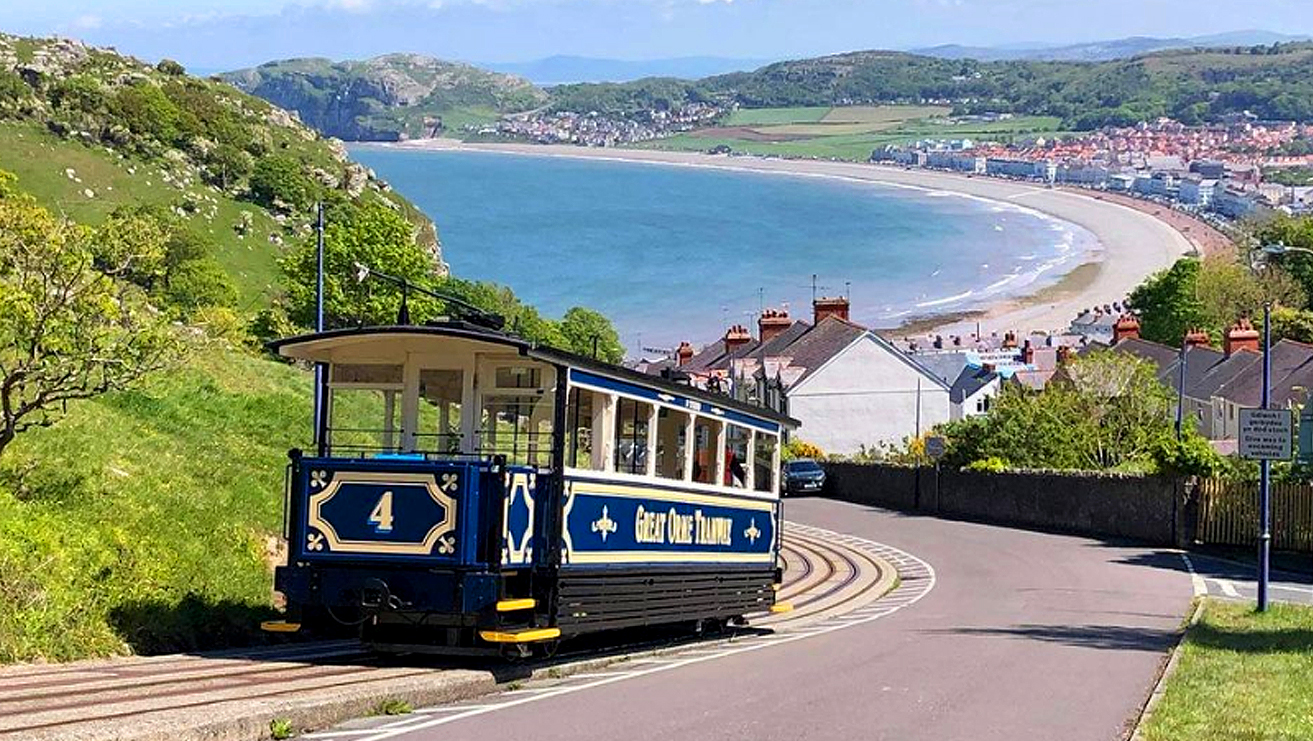
Our next stop is Llandudno, a Victorian-era seaside town brimming with charm. Take a ride on the Great Orme Tramway to the summit of the Great Orme, a limestone headland with panoramic views of the town and the sea. The tram itself is cable operated on the public road (for the first half at least) rather than on rails and has been in operation for over 100 years. If. You are able to pick a clear day you have stunning views in all directions at the summit, there is also a visitor’s centre.
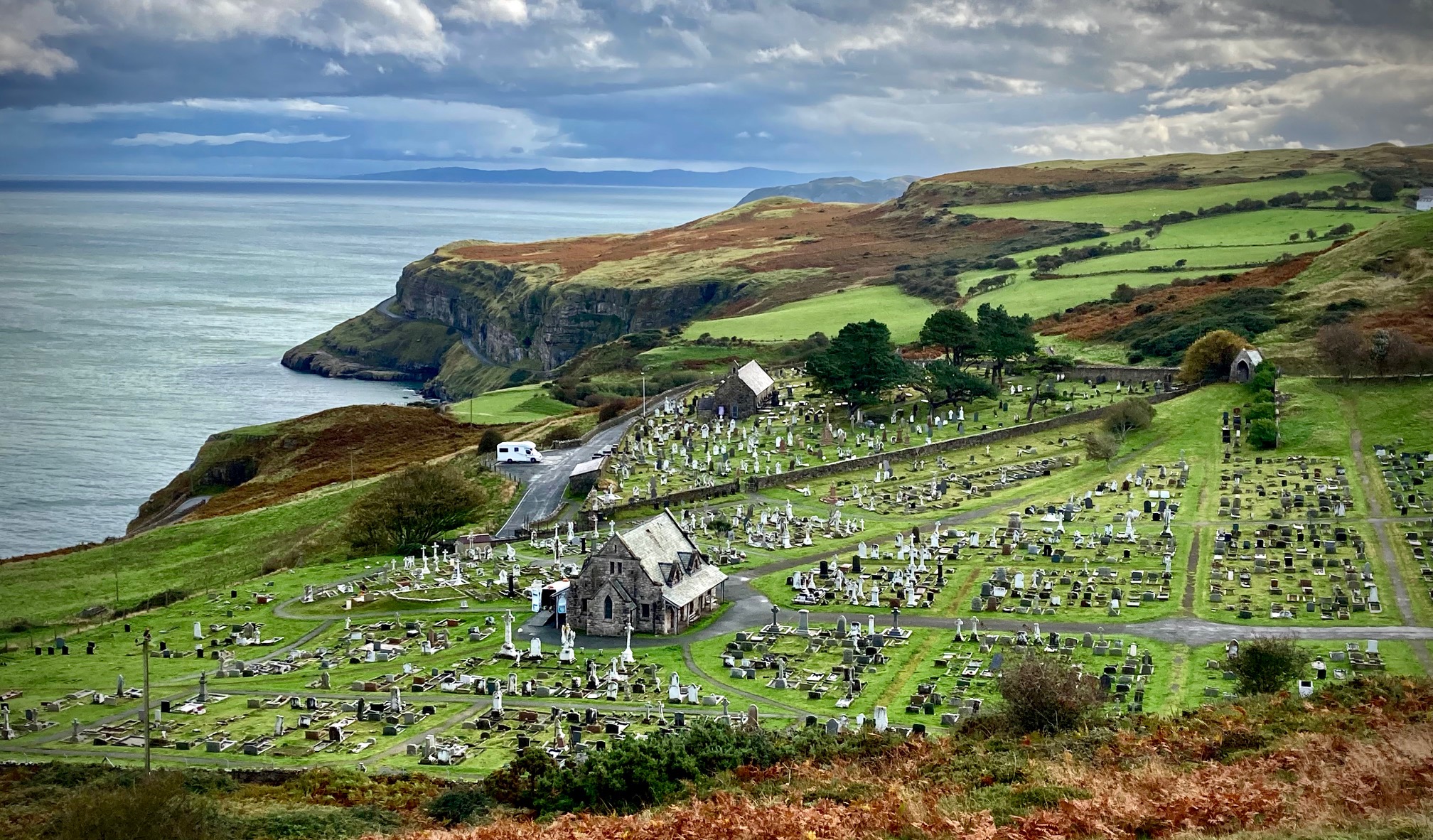
Take a picnic and enjoy many of the way-marked walks. Bronze Age copper mines, an Iron Age fort and a 6th century St Tudno’s church are some of the highlights on top of the Great Orme.

Enjoy a leisurely stroll along the Llandudno Pier. Filled with amusement arcades and traditional seaside entertainment, with a Ferris Wheel and Live Music, it’s been entertaining since 1878.
This is Wales’s longest Pier stretching out 2,295 feet (700m) into the Irish Sea.
Other attractions in Llandudno include a Lifeboat station, a distillery and a museum
Conwy and its imposing Castle
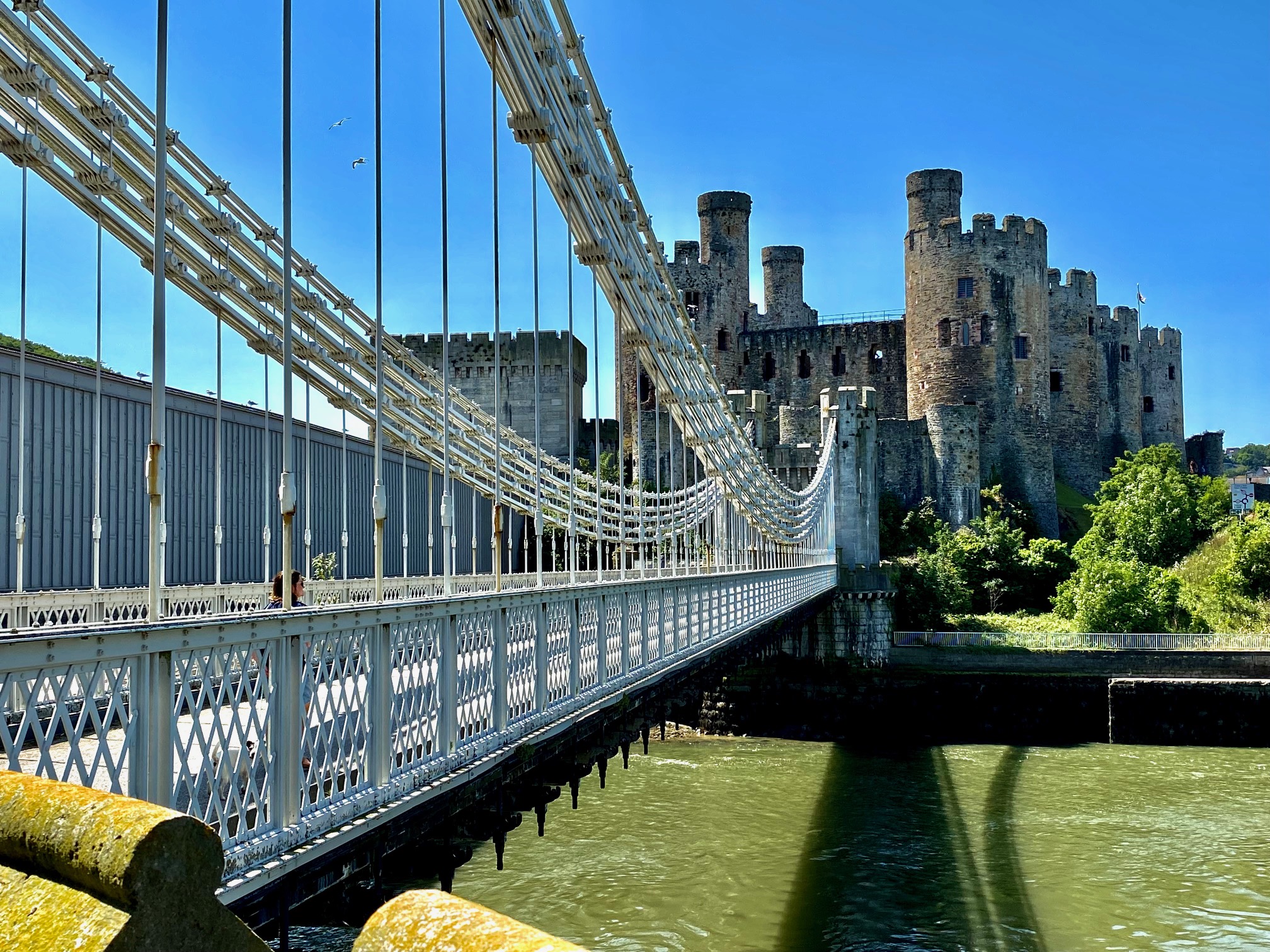
Nestled on the banks of the River Conwy in North Wales, the town of Conwy is a treasure trove of history and architectural splendour. Its most iconic landmark, Conwy Castle, stands as a testament to the town’s rich heritage and offers visitors a glimpse into the past.
Conwy Castle, a UNESCO World Heritage Site, is one of the most impressive fortifications in Europe. Built by Edward I in the 13th century, it was designed to showcase the might and power of the English monarch. Its imposing stone walls and imposing towers provide a striking visual spectacle that draws visitors from far and wide.
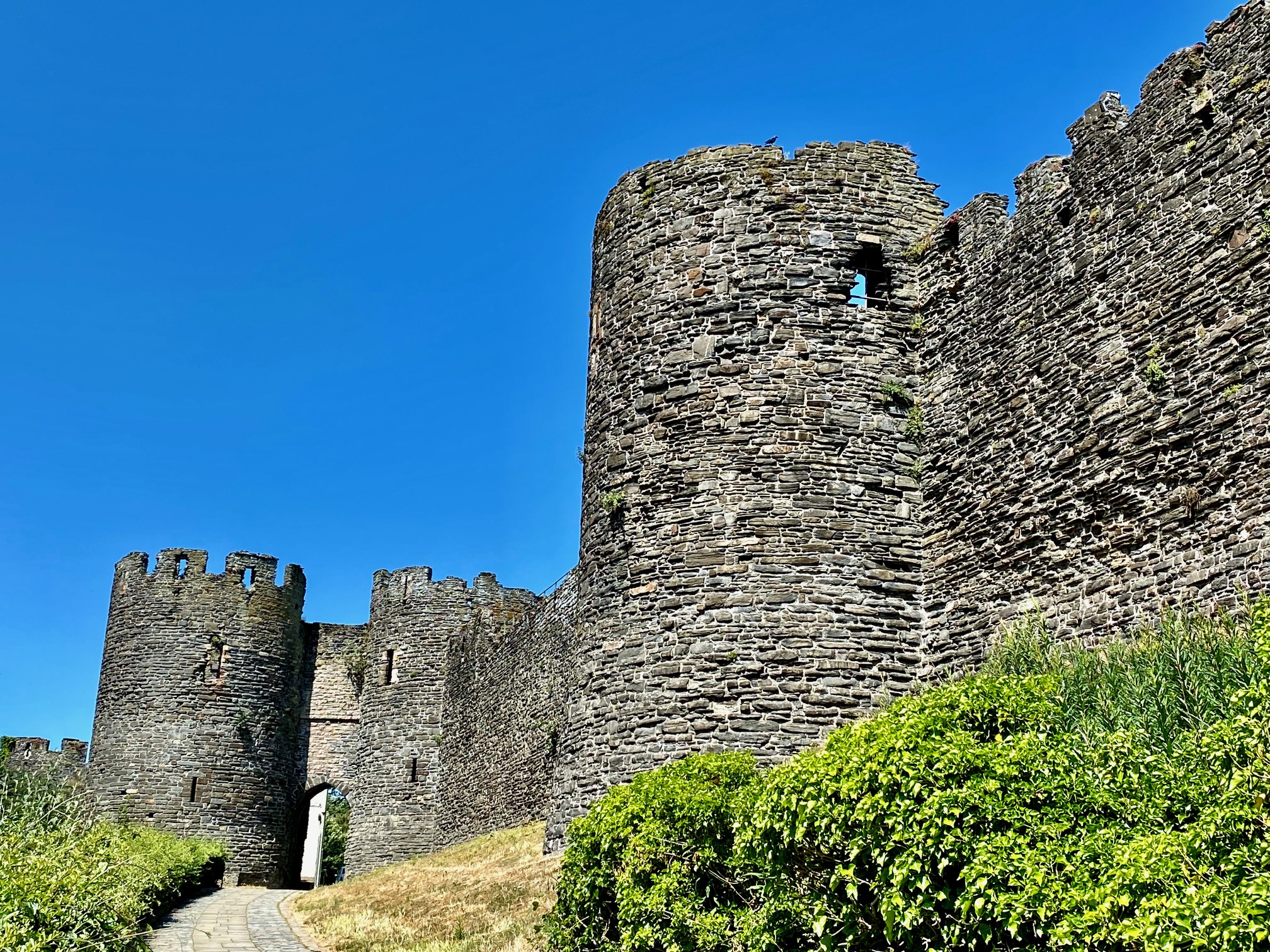
Stepping through the castle’s gates is like stepping back in time. Exploring its labyrinthine passages and climbing its towers offers a fascinating insight into medieval life. From the battlements, visitors are rewarded with breathtaking views of the surrounding countryside and the nearby Snowdonia mountains.
Beyond the castle, the town of Conwy itself has much to offer. Stroll along its narrow cobbled streets, lined with quaint shops and historic buildings, and soak in the charming atmosphere. The town’s medieval walls, remarkably intact, encircle the town and provide an enchanting backdrop for a leisurely walk.
Conwy’s bustling quay is another must-visit destination. Here, you can watch as fishing boats bob in the water and enjoy views of the picturesque Conwy Estuary. Take a moment to explore the Smallest House in Britain, a tiny red cottage that stands as a quirky reminder of the town’s maritime past.
Conwy Suspension Bridge
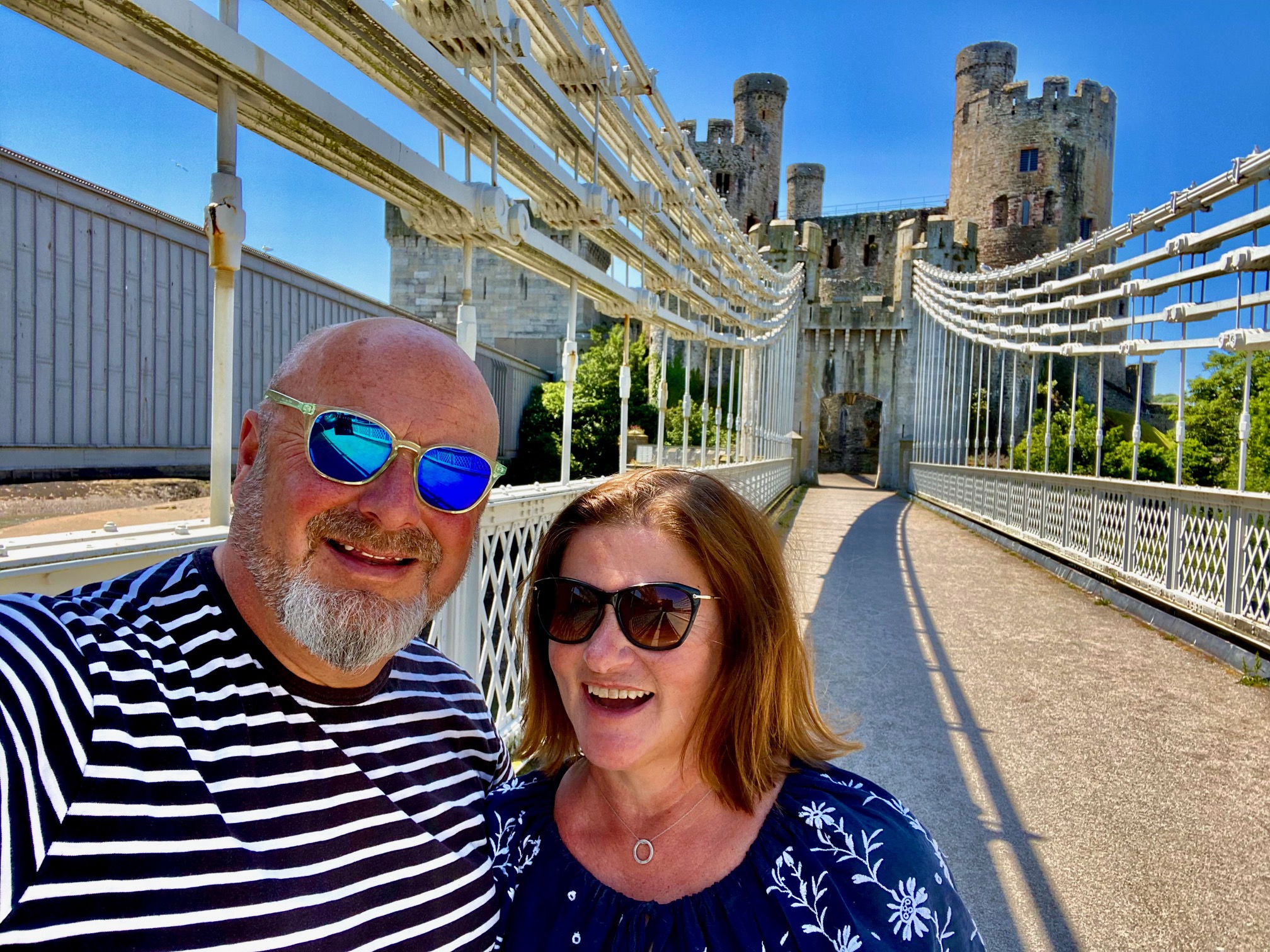
For those seeking cultural enrichment, the Conwy Suspension Bridge is a sight to behold. Designed by Thomas Telford, this elegant bridge spans the River Conwy and offers stunning views of the castle. Its graceful arches and intricate ironwork are a testament to Telford’s engineering prowess.
In conclusion, Conwy and its imposing castle offer a captivating journey through time. From the towering walls of Conwy Castle to the charming streets of the town itself, visitors are transported to a bygone era. With its rich history, stunning natural surroundings, and nearby attractions, Conwy is a destination that promises to leave a lasting impression.
Coastal Beauty of Anglesey

Leaving the mountains behind, we reach Anglesey, an island known for its stunning coastline and rich history. Accessed by two bridges, please take care when choosing your route if your vehicle is wide, the Menei bridge only allows 2.6 meters between its gateways.
Located off the northwest coast of Wales, Anglesey is a coastal gem that offers visitors a serene escape from the bustling cities. With its pristine beaches, rugged cliffs, and charming villages, Anglesey is a haven for nature lovers and those seeking tranquillity.
One of the main draws of Anglesey is its stunning coastline. Miles of golden sand and crystal-clear waters beckon beachgoers to relax and soak up the sun. Trearddur Bay, with its picturesque crescent shape and calm waters, is a popular spot for families and water sports enthusiasts. For a more secluded experience, head to Porth Dafarch or Lligwy Beach, where you can enjoy a peaceful stroll along the shore.
Beyond the beaches, Anglesey boasts a wealth of natural wonders. The island’s coastal path provides breathtaking views of the rugged cliffs and the expansive Irish Sea. Hiking along this scenic trail allows visitors to witness the raw beauty of the coastline, spot wildlife, and discover hidden coves and sea caves.
Anglesey is also a haven for birdwatchers, as it is home to numerous nature reserves and habitats. The South Stack Cliffs RSPB Reserve, with its dramatic cliffs and nesting seabirds, is a must-visit destination for bird enthusiasts. Keep an eye out for puffins, guillemots, and razorbills as they dive into the sea.
Around Anglesey

In addition to its natural beauty, Anglesey offers a wealth of historical and cultural attractions. Beaumaris Castle, a UNESCO World Heritage Site, stands as an impressive testament to medieval fortification. Explore its towering walls and spiral staircases, and imagine the battles that once took place within its confines.
For a taste of traditional Welsh life, visit the village of Llanfairpwllgwyngyllgogerychwyrndrobwllllantysiliogogogoch, famous for having the longest place name in Europe. Stroll along its quaint streets, visit the St. Mary’s Church, and learn about the village’s unique history.
In conclusion, Anglesey’s coastal beauty is a feast for the senses. From its golden beaches to its rugged cliffs, this idyllic island offers a tranquil retreat for those seeking natural wonders and cultural treasures. Whether you’re lounging on the sand, hiking along the coastal path, or immersing yourself in the island’s rich history, Anglesey is a destination that captivates and rejuvenates. So, embrace the serenity of this coastal paradise and discover the hidden gems of Anglesey.
Beaumaris and its castle

Exploring Beaumaris is a joy. It’s a wonderful town with wonderful shops to poke about in and a wonderful tea room to enjoy in addition to the usual pubs and it opens it doors at the old Victorian Court and also Jail, for the brave.
Explore Beaumaris Castle, a UNESCO World Heritage Site, and marvel at its impressive fortifications. Another of Edward I’s castles in North Wales, this one however was never finished.
Other Anglesey attractions
Take a stroll along the sandy beaches or visit South Stack Lighthouse. Perched on a cliff edge it offers mesmerising views of the Irish Sea.
Don’t miss Penmon Priory, Cross and St Seiriol’s Well, and the huge birdhouse which is the Penmon Dovecote. Also lovely is the Anglesey sea zoo. Don’t forget to have your photo taken underneath the railway station sign at Llanfairpwllgwyngyllgogerychwyrndrobwllllantysiliogogogoch!
We were delighted to see that the model village is now in new hands. Having visited last some ten years (or more) ago, at the time it was truly terrible. But with new owners to breathe new life into an old concept you can relive some childhood pleasures. If you go on a Monday they make fresh pizza in the cafe from 11am
There is no shortage of accommodation, park ups and cosy beach coves on Anglesey. Just have to hope that you arrive bringing wonderful weather with you.
Holyhead and Beyond
Our journey concludes in Holyhead, well known as an Irish ferry terminal, it’s a town rich in maritime history. Explore the Holyhead Maritime Museum. Here you can learn about the town’s connection to the sea and its importance as a port. For nature lovers, Breakwater Country Park offers scenic walks and panoramic views of Holyhead Mountain. Make tracks to the RSPB visitor centre in Ellins Tower, additionally, South Stack is a popular bird-watching centre.
Holyhead has a good range of restaurants and pubs, and a good choice of shops, with an out-of-town shopping centre.
Cultural Delights along the Route
Throughout The North Wales Way, you’ll encounter a vibrant Welsh culture. Traditional Welsh music fills the air in pubs and festivals. It is a delightful way to immerse yourself in the local traditions. Don’t forget to savour the delicious local cuisine, including dishes like Welsh rarebit, bara brith, and cawl. There are plenty of wonderful seaside venues on this coast including the simpler venues of Llanfairfechan, and Abergele. At Rhyl and Colwyn Bay, you get the full-on family fun seaside holiday with cinemas and an Oceanworld. These are all perfect excuses to get off the North Wales Expressway and go exploring.
Travel Tips and Practical Information
Before embarking on The North Wales Way, here are a few travel tips to enhance your experience. Consider using public transportation or renting a car to navigate the route comfortably. Take advantage of local resources, such as visitor centres, for information on attractions, events, and dining options. Don’t forget to pack comfortable walking shoes, waterproof clothing, and a camera to capture the stunning landscapes.
Conclusion
The North Wales Way from Mold to Holyhead offers a functional journey between the Cambrian Way and the Coastal Way. However, you can also find stunning landscapes, rich history, and vibrant culture here. It’s not as wonderful as the Cambrian or Coastal routes but whether you’re an outdoor enthusiast, a history buff, or a food lover, you will find that this route has something new to offer you. From Mold’s medieval charm to Holyhead’s coastal beauty, every stop along the way feels like an adventure. Come and spend some time on this driving route and discover the wonders of North Wales.
Road Trip Wales Guide Book
Road Trip Wales – the ultimate ‘No Fuss’ Wales guidebook by Robbie Roams. Featuring incredible locations, practical tips and stress-saving hacks to ensure your Welsh Road Trip is simply unforgettable. This in-depth guidebook has everything you could possibly need to plan your Wales road trip, from Wales itineraries to budgeting and accommodation. You’ll have an incredible experience on one of the UK’s best-kept secrets!
Looking For Some Inspiration?
We always like to settle down with a book when researching a trip. Once we have a short list of places we want to see, then we hit the internet to narrow down what is viable or doable in our motorhome.
The North Wales Way: Frequently Asked Questions
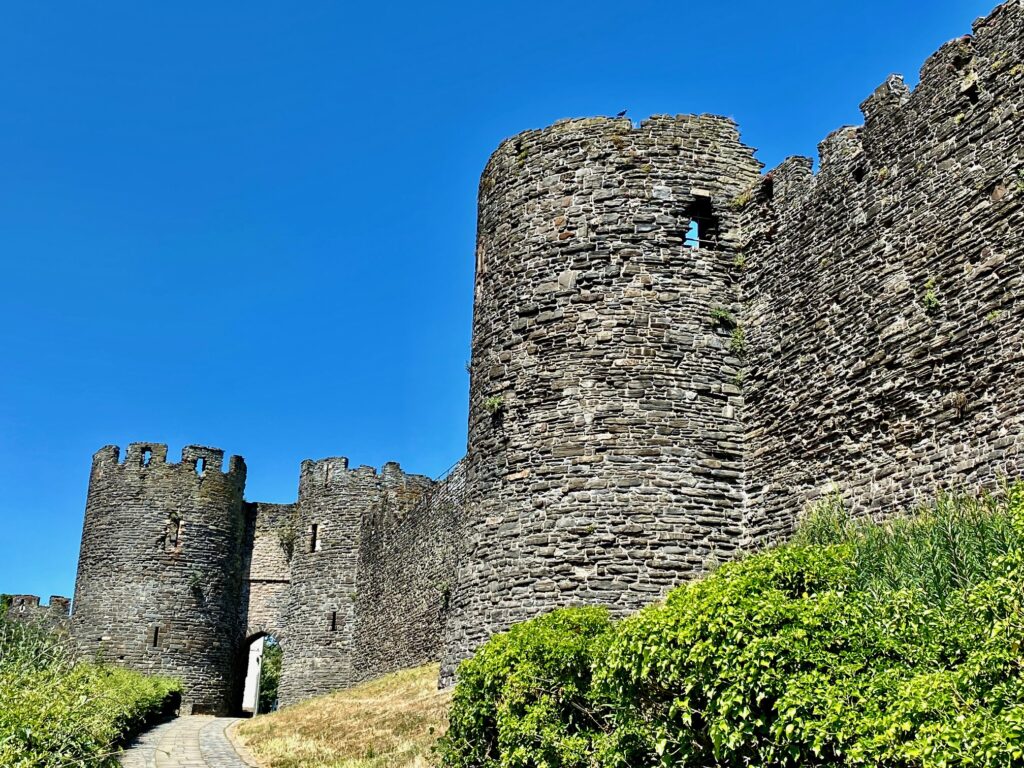

Travelling The North Wales Way in a Motorhome or Campervan?
We are currently putting together a list of our favourite places to stay overnight including some free park-ups and Campsites.
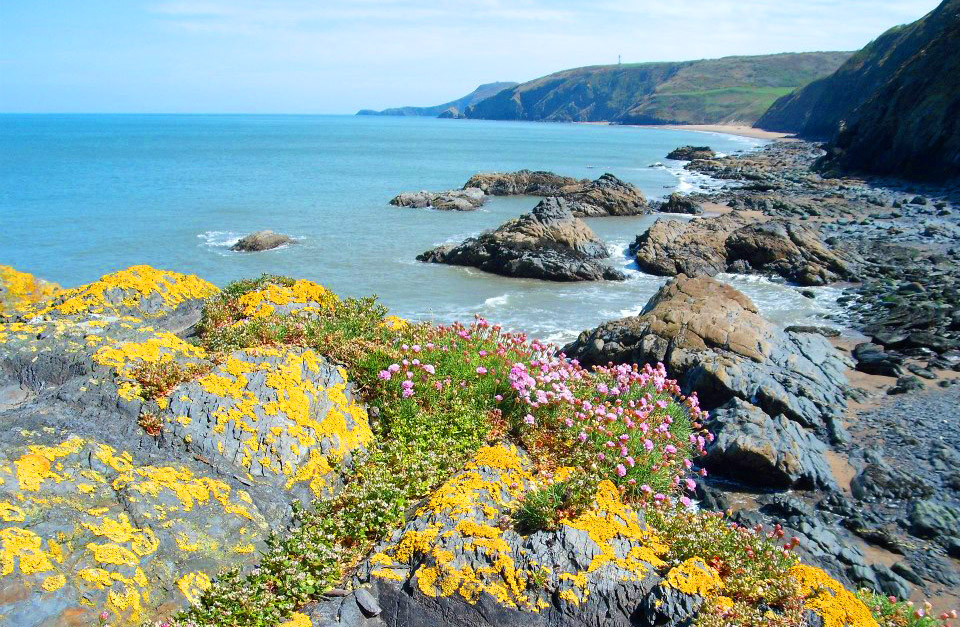
Start Your Coastal Way Journey.
A Coastal wander along the stunning West Wales Coast. Start your Journey HERE

Start Your North Wales Way Journey.
Exploring the North Coast and the Isle of Anglesey. Start your Journey HERE

Discover Wales: Stunning Locations to Visit
Some of our favourite places to visit on a trip around Wales. Find More HERE
Feeling Inspired?
Maybe you’ve driven the Wales Way, or embarked on a Wales road trip? You may have a business on, or near one of the Wales Way routes. Would you like write a guest post for our Wales Way Blog and tell us how you got on? Drop us a line and let us know what you have in mind.

